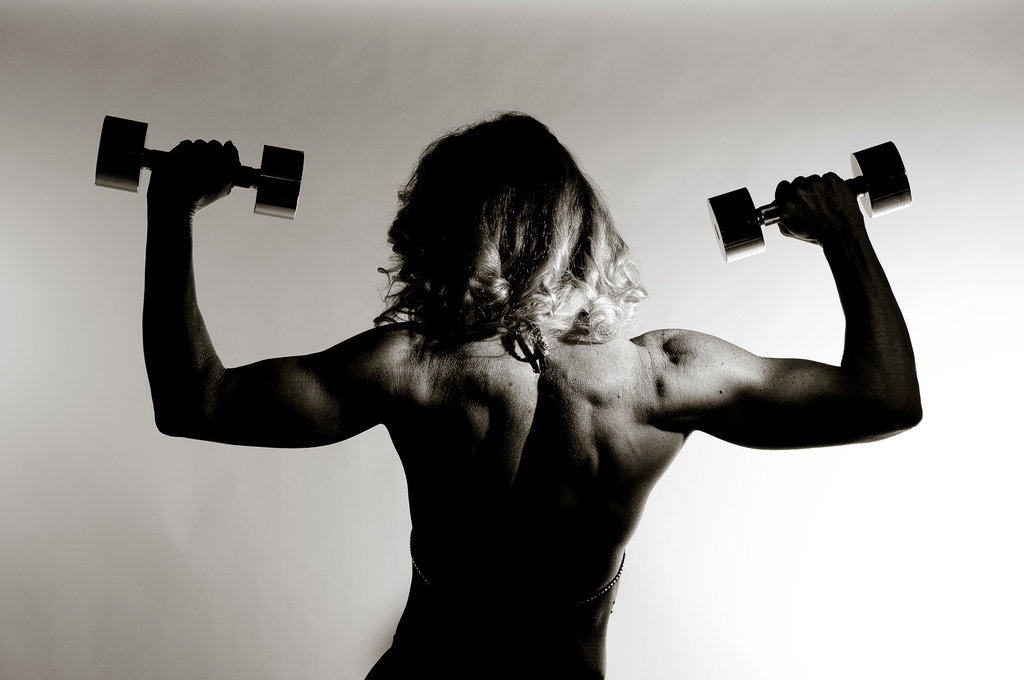by Mim Kempson | @MimKempson
Muscles were once a privilege reserved solely for men. In prehistoric times gender dichotomies were essential to survival. Homosapiens lived by the notion that a muscular body structure signified a well-bred male. Although a woman required strength to perform many hands-on tasks, she was visually less strapping. ‘Muscles are manly,’ became a kind of mantra which lived on for centuries. Women were expected to remain soft-edged and skinny, or voluptuous. This was society’s cookie-cutter idea of femininity.
A new fitness revolution, backed by the popularised motto ‘strong is the new skinny’, is gaining momentum. According to Dr Liz Dean, who has lectured in body image at Melbourne University for seven years, muscular body types are becoming more fashionable amongst women.
“I think we’re in a really interesting junction in terms of this hyper-idealisation of youthfulness, which fitness regimes tend to correspond with,” says Dr Dean. “And at the moment the ideal is ‘fit and slender’.”
Dr Dean’s sociology student, Josie Reade, recently completed an honours thesis, which analysed representations of the female body through Instagram posts hashtagged with #fitspiration. The thesis was titled, “The Female Body on Instagram: Is Fit the New It?”
“In the past we saw bodies being idealised through traditional forms of media,” says Reade. “But social media is giving it that platform, and people are searching for images that show visual signs of fitness, which is muscularity.”
Reade’s research indicates muscles are no longer confined to bodybuilding or elite sports. There’s now a tendency for slender women to be shown with visible arm, leg and abdominal muscle definition. It wasn’t the subject matter which surprised Reade, but the way it was presented. She observed a trend in these Instagram posts.
“Literally over half the images were decapitated,” she says, sounding shocked.
Muscles were rarely attached to an identity: the women’s faces were cropped out of frame. Bulging biceps, prominently defined delts, rippling abs and squat-sculpted derrières are framed for centre stage. They’re a symbol of accomplishment. Even more, muscles have been used for advertising a service or brand. For Kayla Itsines, Ashy Bines and Sophie Guidolin that service is their fitness and diet plans.
“Often these women go on to create a livelihood through Instagram accounts,” says Dr Dean. “This new trend is part of a particular market economy and can be explained through consumption practices.”
Sophie Guidolin is a qualified nutritionist and trainer, International Natural Bodybuilding Australia prize-winning fitness model, soon-to-be mother of four and Instagrammer of 210,000 followers. Guidolin says muscles changed her life.
“Before my first pregnancy I wasn’t doing any exercise,” she says. “In fact, I had never been to the gym and I felt weak, exhausted and frail.”
Guidolin was initially convinced strength training caused women to ‘bulk up’. Until recently this was a common misconception, which caused women like Guidolin to avoid lifting weights.
“It wasn’t until I was heavily involved with competing, and seeing the different divisions, of women who were not using enhancing hormones versus those who were, to notice the real difference,” says Guidolin.
“There is no way a woman who is not using any additional hormone supplements could become bulky or masculine simply from weight training.”
In 2010, the bodybuilding community listened to women’s growing interest in muscles and devised a category not entirely fuelled by the principle, “bigger is better” principle. “Bikini” competitors are judged on proportion, symmetry, balance, shape and skin tone. This change in bodybuilding practice reflects a change occurring amongst recreational gym-goers. Women are realising muscle is no longer an all-or-nothing commitment.
According to Dr Dean, the difference between the past (where old media largely dictated society’s ideal body image) and today is we consciously subscribe to these ideals. “We’re aware of what we’re being sold and can speak back to them, refuse them or engage in them if we choose to.”
Even though social media has enabled women to become active agents in shaping representations of the female body, it hasn’t eradicated body idealisation.
Therefore, has strong really become the new skinny – an entirely unique body type on it’s own – or have muscles come as an added extra?
“It’s no longer enough to be skinny,” Reade says. “You have to be visually fit too.”
Her research shows the female bodies represented in the photos hashtagged with #fitspiration both mirror and extend contemporary notions of the ideal body.
If this is true, the bar has been lifted significantly higher for women; developing muscles is no easy feat. According to Guidolin, it requires a significant amount of dedication and sacrifice to achieve a strong body.
Muscle were once the monsters women ran from (on treadmills and cross trainers; weights were villains. Today, muscle is a celebrity in itself, a marketable commodity and a trophy on display. It’s no longer a definitive token of masculinity, nor is femininity a dictionary definition.
Photo: flickr/Scott Buttner


